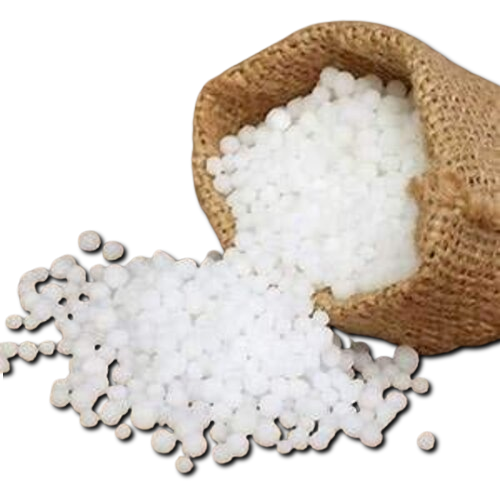“Boosting Crop Yields in Punjab: The Benefits and Best Practices of Using Sona Urea Fertilizer”

Agriculture is the backbone of Pakistan’s economy, with Punjab playing a pivotal role in the country’s agricultural output. One of the key elements contributing to the success of crop production in this region is the use of high-quality fertilizers. Among these, Sona Urea 1kg Ffc Nitrogen 46%, a product of FFC (Fauji Fertilizer Company), stands out due to its high nitrogen content and proven efficacy. This article delves into the benefits, application methods, and impact of Sona Urea on rice fields and other crops in Punjab, Pakistan.
Understanding Sona Urea
Sona Urea is a granular fertilizer containing 46% nitrogen, making it one of the most concentrated nitrogenous fertilizers available. Nitrogen is a critical nutrient for plant growth, playing a vital role in photosynthesis, protein synthesis, and overall plant development. The high nitrogen content in Sona Urea ensures that crops receive an adequate supply of this essential nutrient, leading to improved growth and higher yields.
Importance of Nitrogen in Crop Production
Nitrogen is a fundamental component of chlorophyll, the compound that plants use to photosynthesize and produce energy. It is also a major component of amino acids, the building blocks of proteins necessary for cell structure and function. Adequate nitrogen supply is crucial for:
Enhanced Photosynthesis:
Promotes efficient energy production in plants.
Vigorous Growth:
Supports the development of leaves, stems, and roots.
Increased Yields:
Leads to higher crop productivity and quality.
Improved Soil Fertility:
Enhances the overall nutrient profile of the soil, benefiting subsequent crops.
Application of Sona Urea in Rice Cultivation
Rice is a staple crop in Punjab, occupying a significant portion of the agricultural landscape. The use of Sona Urea in rice cultivation has shown remarkable results in terms of crop health and yield. Here’s a step-by-step guide on how to effectively use Sona Urea for rice fields:
1. Soil Testing
Before applying Sona Urea, it is essential to conduct a soil test to determine the existing nutrient levels and the specific requirements of the soil. This helps in customizing the fertilizer application to meet the crop’s needs.
2. Pre-Planting Application
Incorporate Sona Urea into the soil during the land preparation stage. This ensures that the nitrogen is available to the rice plants right from the beginning of their growth cycle. The recommended dosage varies depending on soil fertility, but generally, 50-70 kg per acre is advised.
3. Split Application
For optimal results, it is recommended to apply Sona Urea in split doses:
First Dose:
Apply 50% of the recommended dosage at the time of transplanting or sowing.
Second Dose:
Apply the remaining 50% during the early tillering stage (about 20-25 days after transplanting).
4. Application Method
Broadcasting is the most common method of applying Sona Urea in rice fields. Ensure even distribution to avoid over-fertilization in some areas and under-fertilization in others. Incorporating urea into the soil immediately after application helps in reducing nitrogen losses due to volatilization.
5. Irrigation Management
Proper irrigation management is crucial to maximize the efficiency of Sona Urea. Ensure that the fields are adequately flooded during application to facilitate the movement of nitrogen into the root zone.
Benefits of Sona Urea in Rice Fields
The use of Sona Urea in rice cultivation offers several benefits, including:
Enhanced Growth:
Provides a steady supply of nitrogen, promoting vigorous vegetative growth.
Higher Yields:
Studies have shown significant yield increases in rice fields treated with Sona Urea compared to those without.
Improved Grain Quality:
Results in better grain filling and higher quality rice.
Cost-Effective:
The high nitrogen content reduces the amount of fertilizer needed, lowering overall input costs.
Application of Sona Urea in Other Crops
Apart from rice, Sona Urea is also beneficial for other crops commonly grown in Punjab, such as wheat, maize, sugarcane, and vegetables. Here’s how Sona Urea can be effectively utilized in these crops:
1. Wheat
Pre-Sowing Application:
Apply 50% of the recommended dosage during land preparation.
Top Dressing:
Apply the remaining 50% during the tillering stage.
2. Maize
Basal Application:
Apply 50% of the recommended dosage at the time of planting.
Side Dressing:
Apply the remaining 50% during the knee-high stage.
3. Sugarcane
Planting Stage:
Apply 50% of the recommended dosage during planting.
Top Dressing:
Apply the remaining 50% during the early growth stage.
4. Vegetables
Pre-Planting:
Incorporate Sona Urea into the soil before planting.
Fertigation:
Apply through irrigation systems during the growing season for continuous nitrogen supply.
Best Practices for Using Sona Urea
To maximize the benefits of Sona Urea, farmers should adhere to the following best practices:
1. Timely Application
Apply Sona Urea at critical growth stages to ensure that the crops receive nitrogen when they need it the most.
2. Proper Dosage
Follow the recommended dosage guidelines based on soil tests and crop requirements. Avoid over-application to prevent nutrient imbalances and environmental pollution.
3. Even Distribution
Ensure uniform distribution of Sona Urea to avoid areas of over or under-fertilization. Use appropriate equipment for broadcasting or fertigation.
4. Soil Moisture Management
Maintain optimal soil moisture levels to enhance nitrogen uptake and minimize losses due to volatilization and leaching.
5. Crop Rotation
Implement crop rotation practices to maintain soil health and reduce the risk of nutrient depletion.
Environmental Considerations
While Sona Urea is highly effective in boosting crop yields, it is essential to consider its environmental impact. Excessive use of nitrogen fertilizers can lead to:
Water Pollution:
Runoff from fields can contaminate water bodies, leading to eutrophication.
Greenhouse Gas Emissions:
Nitrous oxide, a potent greenhouse gas, can be released from nitrogen fertilizers.
To mitigate these impacts, farmers should adopt sustainable practices such as:
Precision Farming:
Utilize technologies to apply fertilizers more accurately and efficiently.
Integrated Nutrient Management:
Combine organic and inorganic fertilizers to enhance soil fertility and reduce dependency on chemical inputs.
Cover Cropping:
Plant cover crops to absorb excess nitrogen and improve soil structure.
Success Stories from Punjab
Numerous farmers in Punjab have experienced significant improvements in crop productivity and profitability through the use of Sona Urea. Here are a few success stories:
1. Farmer Aftab from Sheikhupura
Aftab, a rice farmer from Sheikhupura, reported a 20% increase in his rice yield after switching to Sona Urea. He attributes the success to the consistent nitrogen supply and improved soil fertility.
2. Farmer Zainab from Faisalabad
Zainab, a wheat farmer from Faisalabad, witnessed healthier and more robust wheat crops with the use of Sona Urea. She noted that the split application method helped in achieving uniform growth and better grain quality.
3. Farmer Riaz from Multan
Riaz, a sugarcane farmer from Multan, saw a marked improvement in his sugarcane yield and quality. The balanced application of Sona Urea during the planting and growth stages contributed to thicker and juicier canes.
Conclusion
Sona Urea, with its high nitrogen content and proven efficacy, is a valuable tool for farmers in Punjab, Pakistan. Its application in rice fields and other crops has demonstrated significant benefits in terms of growth, yield, and quality. By adhering to best practices and considering environmental sustainability, farmers can maximize the advantages of Sona Urea while ensuring the long-term health of their soil and environment.
In the dynamic landscape of agriculture, the role of quality fertilizers like Sona Urea cannot be overstated. As farmers in Punjab continue to adopt innovative and sustainable practices, products like Sona Urea will play a crucial role in driving agricultural productivity and prosperity.









